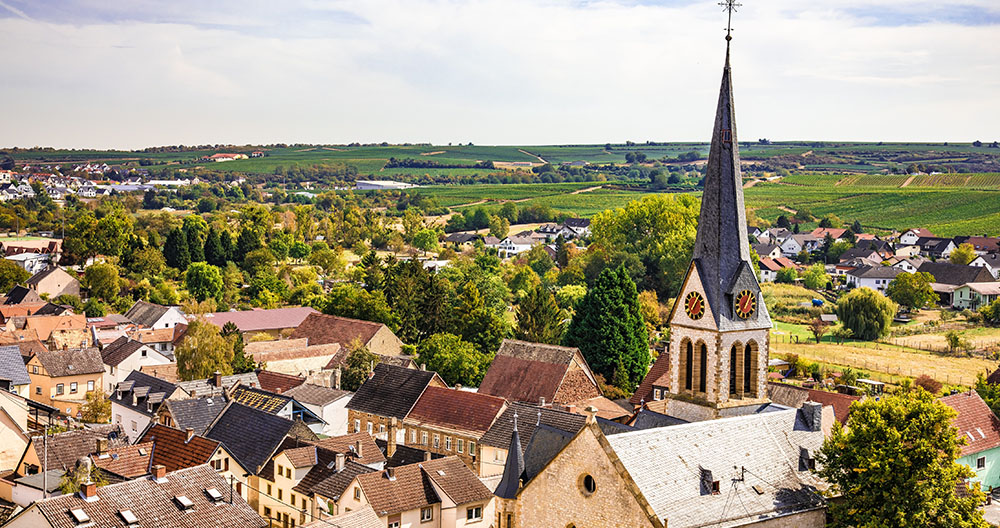
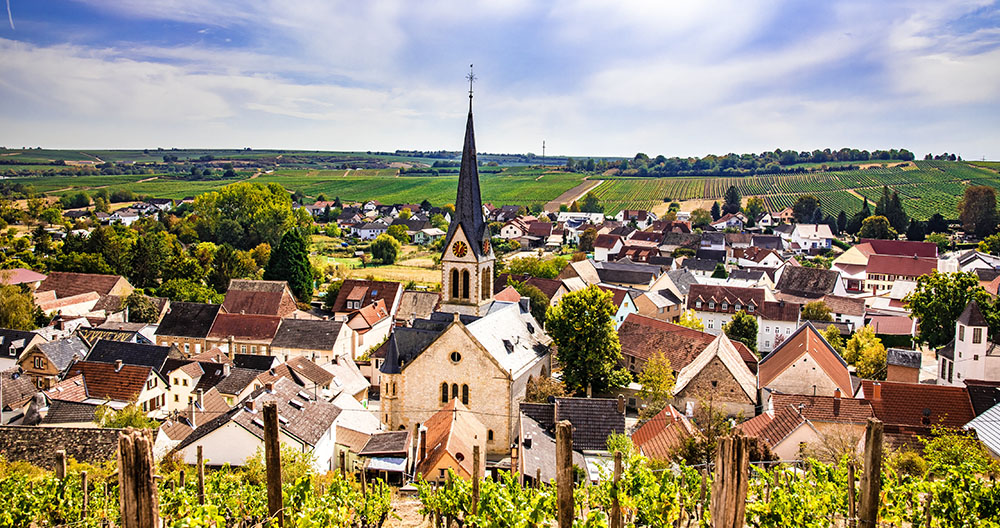
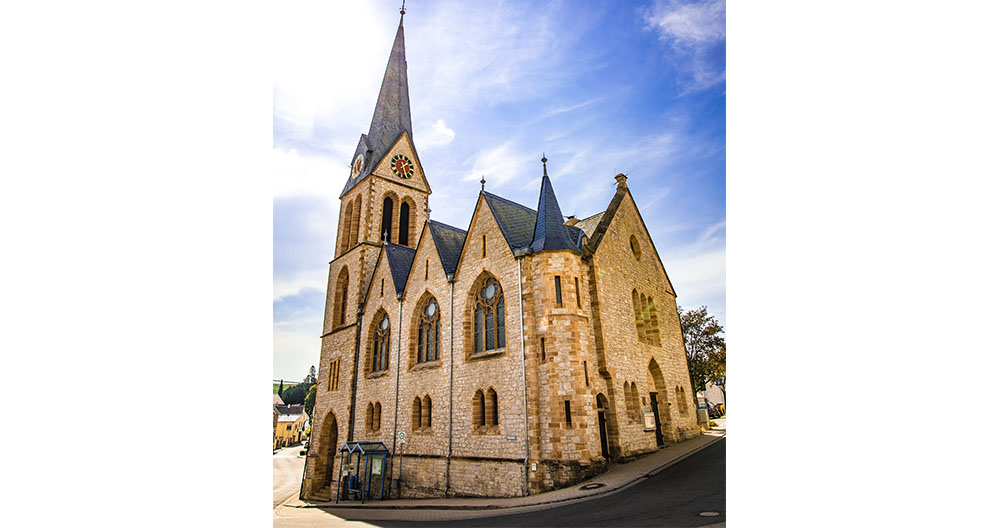
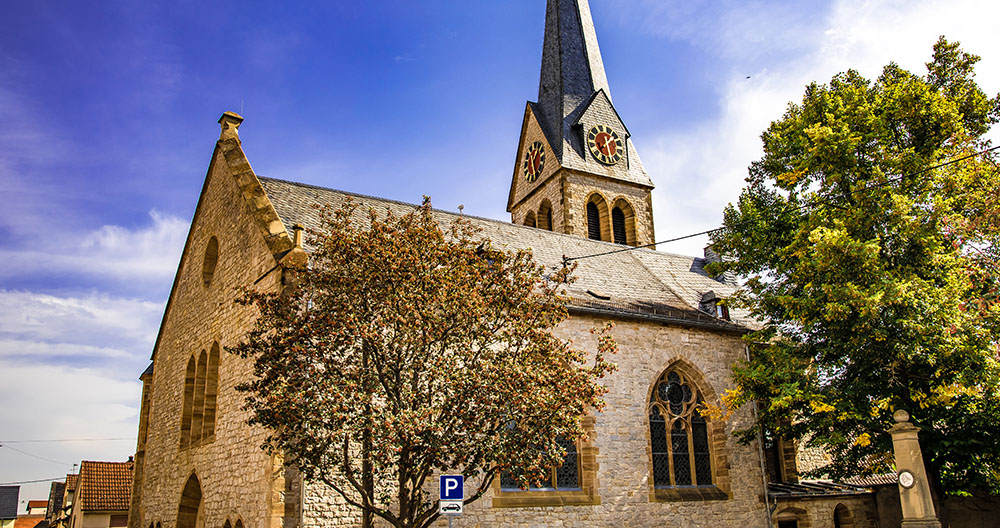
The Protestant Church is – along with the castle tower – one of Schwabsburg’s landmarks.
The imposing quarry-stone-building in a neo-Gothic style was built between 1892-94. The mighty choir flank tower, the three distinctive dwelling houses with their intermediate gables and the filigree stair tower make the church special in Rheinhessen.
The original, historical church-windows also deserve a closer inspection. They were designed by Heinrich Beiler’s glass painting company in Heidelberg and donated by Schwabsburg families. The windows on the sides show the evangelists and Martin Luther. The particularly colorful window in the altar-room shows the resurrection of Christ – which is also represented by the modern wooden cross designed by the renowned artist Gustav Nonnenmacher. A bronze figure of Christ rises from the cross, spreading his arms invitingly. The rising Christ leaves the skulls and the cross behind.
Incidentally, a church was first mentioned in Schwabsburg as early as 1363; it was consecrated to the Saint Pancras. The well-known Merian copper engraving of Schwabsburg from 1645 instead, shows a small church in the town center, which was built in 1616.
You’ll find further stops of our tour throught Schawabsburg at the map on this website.





The Protestant Church is – along with the castle tower – one of Schwabsburg’s landmarks.
The imposing quarry-stone-building in a neo-Gothic style was built between 1892-94. The mighty choir flank tower, the three distinctive dwelling houses with their intermediate gables and the filigree stair tower make the church special in Rheinhessen.
The original, historical church-windows also deserve a closer inspection. They were designed by Heinrich Beiler’s glass painting company in Heidelberg and donated by Schwabsburg families. The windows on the sides show the evangelists and Martin Luther. The particularly colorful window in the altar-room shows the resurrection of Christ – which is also represented by the modern wooden cross designed by the renowned artist Gustav Nonnenmacher. A bronze figure of Christ rises from the cross, spreading his arms invitingly. The rising Christ leaves the skulls and the cross behind.
Incidentally, a church was first mentioned in Schwabsburg as early as 1363; it was consecrated to the Saint Pancras. The well-known Merian copper engraving of Schwabsburg from 1645 instead, shows a small church in the town center, which was built in 1616.
You’ll find further stops of our tour throught Schawabsburg at the map on this website.


